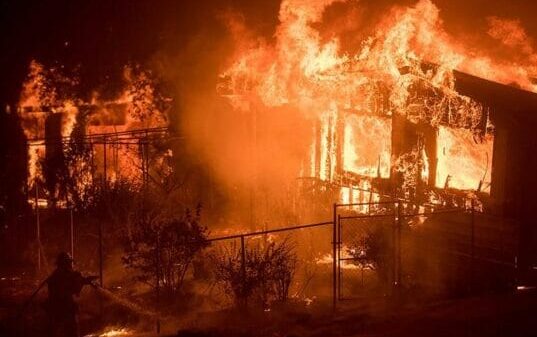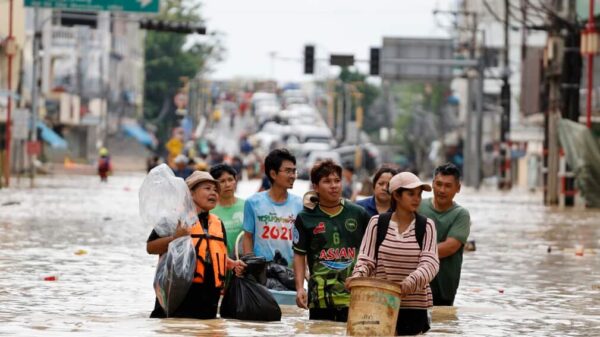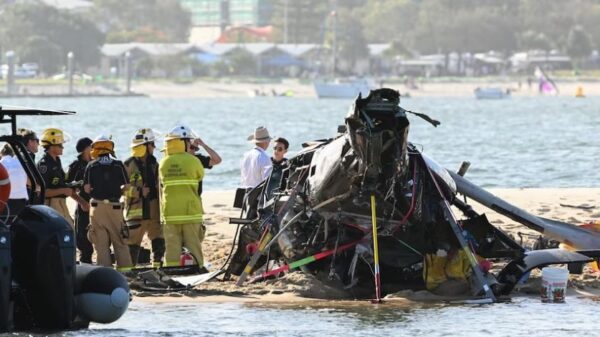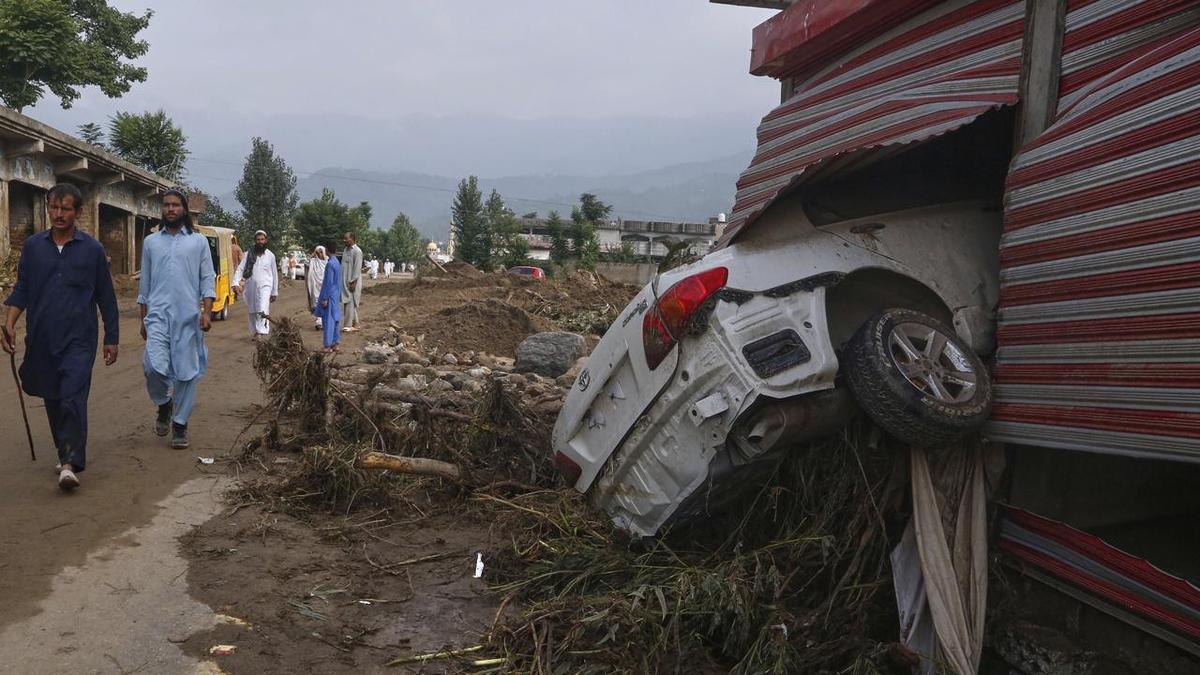URGENT UPDATE: More than 300 people have died in northwest Pakistan following catastrophic floods triggered by relentless heavy rains over the past two days. The deluge, which struck the remote mountainous areas of the Khyber Pakhtunkhwa region, has been described as the deadliest incident of this year’s monsoon season, with the Provincial Disaster Management Authority confirming that 307 fatalities have been recorded and more victims remain missing.
The torrential downpour has devastated numerous communities, particularly in the Buner district, where 184 people are confirmed dead. According to Bilal Faizi, a spokesperson for the official rescue service, the situation is dire and the death toll is expected to rise as recovery operations continue. The region has also witnessed severe lightning strikes and landslides, adding to the chaos.
Eyewitness accounts reveal horrifying scenes of loss and destruction. Saeedullah, a resident of the Bajaur district near the Afghan border, recounted how he awoke to thunder and rushed to save his family, only to find that the roof of their home had collapsed. Tragically, he discovered the bodies of his wife and five children beneath the debris. “There is destruction everywhere, piles of rubble,” he lamented.
In Buner, the rapid onset of floodwaters left residents with no time to escape. Eyewitness Zahid Hussain shared that over 60 lives were lost in his village alone, while more than 20 people are still unaccounted for. He described his frantic efforts to save his nephew as floodwaters surged toward their home, ultimately leaving them homeless within minutes. “The floodwater washed away our house in front of our eyes,” Hussain told reporters from a hospital where he sought treatment for a leg injury sustained during the chaos.
Authorities are scrambling to respond. Ishaq Dar, Pakistan’s Deputy Prime Minister and Foreign Minister, announced that both civilian and military teams are actively engaged in rescue and relief operations. An emergency meeting led by the Prime Minister has been convened to address the unfolding crisis. Chief Secretary Shahab Ali Shah confirmed that local officials have been dispatched to oversee relief efforts and assess the extensive damage.
Medical camps are being established for those affected, and arrangements are being made to provide food and shelter for families who have lost everything. However, the situation worsened when a rescue helicopter crashed due to severe weather, claiming the lives of all five crew members on board.
As Pakistan grapples with this disaster, Zaheer Babar, the country’s chief meteorologist, indicated that extreme weather events are becoming increasingly common. He emphasized that heavy rains in the mountains lead to flash floods in lower-lying areas, catching residents off guard. Babar pointed to climate change and poor urban planning—such as homes built too close to rivers—as exacerbating factors.
This devastating event highlights the urgent need for improved disaster preparedness and climate resilience in vulnerable regions. As rescue operations progress, the nation watches closely, hoping for survivors and mourning those lost. Stay tuned for further updates on this ongoing tragedy.





























































